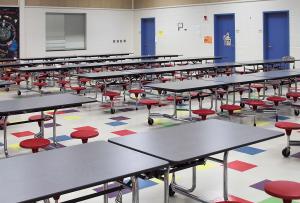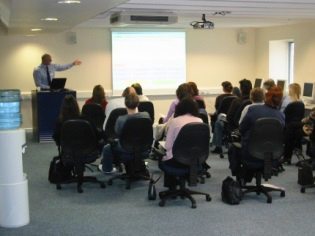Welfare within the workplace.
Once again we have been asked about the requirements for welfare within the workplace, so to assist you we are putting the information out again.
Much of the interest has been generated from the courses we have run about CDM2015 and the welfare requirements under those regulations.
The conversation has then been extended into the office situation with questions such as “what is the maximum temperature we can work in?” and “can I insist on having better ventilation in our office?” So hopefully this article will answer many of your questions.
This week’s 2 recent HSE case look at:
- The owner of a building in Kent and the contractor employed to demolish it have been fined for safety failings after an uncontrolled collapse onto the High Street.
- Brighton Magistrates Court heard how numerous concerns were raised by members of the public about work being carried out by G & S Roofing Limited
As ever, if you have a subject that you would like us to cover one week, please contact us by phone 01458 253682, email or via our Facebook page or by Twitter
Welfare in the workplace.
The Workplace (Health, Safety and Welfare) Regulations 1992 cover a wide range of basic health, safety and welfare issues and apply to most workplaces (with the  exception of those workplaces involving construction work on construction sites, those in or on a ship, or those below ground at a mine). They are amended by the Quarries Regulations 1999, the Health and Safety (Miscellaneous Amendments) Regulations 2002, the Work at Height Regulations 2005, and the Construction (Design and Management) Regulations 2015.
exception of those workplaces involving construction work on construction sites, those in or on a ship, or those below ground at a mine). They are amended by the Quarries Regulations 1999, the Health and Safety (Miscellaneous Amendments) Regulations 2002, the Work at Height Regulations 2005, and the Construction (Design and Management) Regulations 2015.
Requirements under these Regulations
Employers have a general duty under section 2 of the Health and Safety at Work etc. Act 1974 to ensure, so far as is reasonably practicable, the health, safety and welfare of their employees at work. People in control of non-domestic premises have a duty (under section 4 of the Act) towards people who are not their employees but use their premises.
The Regulations expand on these duties and are intended to protect the health and safety of everyone in the workplace, and ensure that adequate welfare facilities are provided for people at work.
These Regulations aim to ensure that workplaces meet the health, safety and welfare needs of all members of a workforce, including people with disabilities. Several of the Regulations require things to be ‘suitable’. Regulation 2(3) makes it clear that things should be suitable for anyone. This includes people with disabilities. Where necessary, parts of the workplace, including in particular doors, passageways, stairs, showers, washbasins, lavatories and workstations, should be made accessible for disabled people.
Interpretation
‘Workplace’ – these Regulations apply to a very wide range of workplaces, not only factories, shops and offices but also, for example, schools, hospitals, hotels and places of entertainment. The term workplace also includes the common parts of shared buildings, private roads and paths on industrial estates and business parks, and temporary worksites (except workplaces involving construction work on construction sites which are covered by other legislation).
‘Work’ – means work as an employee or self-employed person.
‘Premises’ – means any place including an outdoor place.
Ventilation
Workplaces need to be adequately ventilated. Fresh, clean air should be drawn from a source outside the workplace, uncontaminated by discharges from flues, chimneys or other process outlets, and be circulated through the workrooms.
Ventilation should also remove and dilute warm, humid air and provide air movement which gives a sense of freshness without causing a draught. If the workplace contains process or heating equipment or other sources of dust, fumes or vapours, more fresh air will be needed to provide adequate ventilation.
Windows or other openings may provide sufficient ventilation but, where necessary, mechanical ventilation systems should be provided and regularly maintained.
Temperatures in indoor workplaces
Environmental factors (such as humidity and sources of heat in the workplace) combine with personal factors (such as the clothing a worker is wearing and how physically demanding their work is) to influence what is called someone’s ‘thermal comfort’.
Individual personal preference makes it difficult to specify a thermal environment which satisfies everyone. For workplaces where the activity is mainly sedentary, for example offices, the temperature should normally be at least 16 °C. If work involves physical effort it should be at least 13 °C (unless other laws require lower temperatures).
However there is no specified maximum temperature so sensible agreed controls should be adopted when the temperatures become uncomfortable. This should be covered by a risk assessment
Work in hot or cold environments
The risk to the health of workers increases as conditions move further away from those generally accepted as comfortable. Risk of heat stress arises, for example, from working in high air temperatures, exposure to high thermal radiation or high levels of humidity, such as those found in foundries, glass works and laundries.
Cold stress may arise, for example, from working in cold stores, food preparation areas and in the open air during winter.
Assessment of the risk to workers’ health from working in either a hot or cold environment needs to consider both personal and environmental factors. Personal factors include body activity, the amount and type of clothing, and duration of exposure. Environmental factors include ambient temperature and radiant heat; and if the work is outside, sunlight, wind velocity and the presence of rain or snow.
Actions arising from your assessment may include:
- introducing engineering measures to control the thermal effects in a workplace environment, for example heat effects, may involve insulating any plant which acts as a radiant heat source, thereby improving air movement, increasing ventilation rates and maintaining the appropriate level of humidity. The radiant heat effects of the sun on indoor environments can be addressed either by orientating the building so that it doesn’t suffer from the effects of solar loading, or where this is not possible, by the use of blinds or shutters on windows. Where workers are exposed to cold and it is not reasonably practicable to avoid exposure you should consider, for example, using cab heaters in fork-lift trucks in cold stores;
- restriction of exposure by, for example, re-organising tasks to build in rest periods or other breaks from work. This will allow workers to rest in an area where the environment is comfortable and, if necessary, to replace bodily fluids to combat dehydration or cold. If work rates cause excessive sweating, workers may need more frequent rest breaks and a facility for changing into dry clothing;
- medical pre-selection of employees to ensure that they are fit to work in these environments;
- use of suitable personal protective clothing (which may need to be heat resistant or insulating, depending on whether the risk is from heat or cold);
- acclimatisation of workers to the environment in which they work, particularly for hot environments;
- training in the precautions to be taken; and
- supervision, to ensure that the precautions identified by the assessment are taken.
Lighting
Lighting should be sufficient to enable people to work and move about safely. If necessary, local lighting should be provided at individual workstations and at places of particular risk such as crossing points on traffic routes. Lighting and light fittings should not create any hazard.
Automatic emergency lighting, powered by an independent source, should be provided where sudden loss of light would create a risk.
Cleanliness and waste materials
Every workplace and the furniture, furnishings and fittings should be kept clean and it should be possible to keep the surfaces of floors, walls and ceilings clean. Cleaning and the removal of waste should be carried out as necessary by an effective method. Waste should be stored in suitable receptacles.
Room dimensions and space
Workrooms should have enough free space to allow people to move about with ease.
The volume of the room when empty, divided by the number of people normally working in it, should be at least 11 cubic metres. All or part of a room over 3.0 m high should be counted as 3.0 m high. 11 cubic metres per person is a minimum and may be insufficient depending on the layout, contents and the nature of the work.
Welfare Facilities for Construction Workers
The Health and Safety Executive (HSE) has just republished its information sheet on the provision of welfare facilities during construction work. It reflects the legal requirements as set down in the ‘Construction (Design and Management) Regulations 2015’.
What must be provided?
Some employers appear to be under the impression that a cold water supply and chemical toilet are all that they are obliged to provide for the workers. The law, however, sets down the absolute minimum provision as:
- Adequate toilet and washing facilities which includes for toilets that are suitable for both men and women. Running hot water, Soap and towels and the wash basin must ber big enough to allow a person to wash their forearms in it.
- Place to warm up and eat food. So the mess hut must be warm, dry, have means to heat food such as a microwave oven, a kettle to heat water and seats with backs.
- Place to store clothing whilst on site. This area must also allow for drying clothing in wet conditions. So a heater.
The provision of these facilities, which includes ensuring they are located conveniently for the workers and adequately maintained, is an essential element of the planning and preparation stages of a project.
In planning the facilities, it is vital to take account of the maximum number of people who will need to use them and of any requirements that are specific to the particular project. For example, if the work is particularly dirty, showering facilities must also be provided.
Furthermore, it is not sufficient to set up the minimum facilities and then neglect them. They really must be up to standard, be adequately maintained and cleaned.
Whose responsibility?
So who is responsible for providing these facilities? The answer is that responsibility is shared by a number of parties. That is not to say that everyone can leave responsibility to ‘somebody else’. It means that if welfare provision is not up to standard then everyone is held responsible, for example:
- The CDM Principal Designer is responsible for advising the client on what welfare facilities are required during the construction phase of the project.
- The client must not permit construction work to start until adequate welfare facilities in place for the workforce. This can either be by ensuring the builder provides suitable welfare units or by the client allowing theirs to be used.
- Contractors must ensure adequate welfare facilities are available to cater for the workers for whom they are responsible. In particular, the Principal Contractor has overall responsibility for providing the welfare facilities for the site.
There is some flexibility in terms of how the welfare facilities are provided, for example it may be possible to use facilities that are already available on site or close to it. However, everyone is responsible for ensuring they are available throughout the construction phase of a project.
Is there any subject you would like covered in this newsletter? Please contact us by phone 01458 253682, email or visit www.wilkinssafety.co.uk and let us know.
Taunton & Somerset CPD Group at The Lawns Taunton
Thanks once again to everyone who attended on 24th May for the Thorn Lighting Seminar and we hope you will all be able to attend the next one as it looks like it will be very interesting.
Martin Kent our Customer Relations Manager has arranged this month’s seminar – see below. This is the last of these seminars until September so as not to clash with the holiday period. If you would like to give a talk, or know of somebody who would, in the Autumn and Winter months please contact Martin.
The third of these new seminars is on Wed 28th June at 12-15pm prompt please: at The Lawns Taunton..
Our Speaker will be from Ecophon which is about Ceiling Design and Room Acoustics.
If you haven’t already booked your place, or if you are not on the CPD Seminar mailing list but would like to be please drop Martin an email and he will deal with your request.
We are exhibiting AGAIN THIS MONTH
As part of our 25th anniversary celebrations the Wilkins Safety Group are exhibiting at 3 Business Expos this year in Exeter, Swindon and Bristol.
The second of these is at this year’s South West Expo, probably the largest business expo in the South West. The SW Expo takes place on Thursday 29th June 2017 (09:30 – 15:00) at the Steam Museum, Swindon, SN2 2EY. There is plenty of free parking on site and cafe selling food and drink throughout the day.
Book your FREE delegate ticket today
There will be over 170 exhibitors from across the South West and beyond, including ourselves, 5 seminars, 6 workshops, Technology Zone, Motor Zone, Charity Zone, New Business Zone, Food and Hospitality Zone, Live Cookery Demonstrations and even 3 Speed Networking Sessions! It is a great day out for people in business with huge networking opportunities as there will be around 2000 delegates attending!!!!
Come along see us on our stand No 91 and have a look around you will meet some interesting people and perhaps even do some business!
We look forward to seeing you there on the day!
There will also be free to enter Prize Draw
Wilkins Safety Group are going to hold a Prize Draw throughout the day with prizes including: Champagne, Prosecco, Chocolates and Pot Pourri in a jar.
In order to have a chance to win one of these prizes, all you need do is come and talk to us on the stand and leave your business card with the member of our staff that you talked to. What could be easier?
We are also offering a 10% discount off all services signed up for on the day
Training Courses
We are pleased to announce that we have been appointed as a British Safety Council approved Training Centre.
This allows us to run Ofqual accredited qualifications. These Qualifications sit on the Regulated Qualifications Framework and include such courses as
- the CSCS Green Card which was developed in partnership with the Construction Industry Training Board (CITB) for people wishing to apply for a CSCS card.
- Level 2 & 3 Supervising Staff Safely mixed with Risk Assessment which is comparable to IOSH Managing Safely
There are more courses to follow in May and June – See below.
We are also looking to run some short Health and Safety awareness sessions to emphasise the need for improving your H&S procedures.
Also remember we are still available for running “In House” courses and are looking to add new training courses to our list.
If you have any questions about these courses or any other training or would like us to run a particular course for you, call Jon Wilkins of the Wilkins Safety Group on 01458 253682 or email him.
